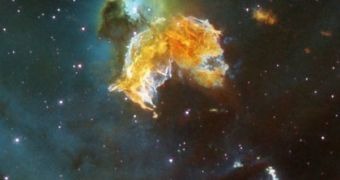The National Ignition Facility in California is the largest laser instrument in the world, and it's scheduled to come online later this year. The beginning of scientific experiments at the laboratory will also mean that the first artificial star will be created on the planet, BBC News reports. That is to say, experts working for the NIF will attempt to prove the sustainability of clean energy, by harnessing the power source that makes stars shine in the skies. In addition to potentially discovering a never-ending source of clean electricity, the effort could also yield some breakthrough knowledge for astronomy as well, hinting at the hidden processes in stars, and potentially offering more data on their life cycles.
“In recreating the process of fusion it was always understood that we could pursue three areas of interest and value,” said Lawrence Livermore National Laboratory expert Dr. Erik Storm. The LLNL currently houses the laser facility. The main goal of the NIF is naturally military, given that it was built in the US. Experts will get a chance of better seeing exactly what goes on inside nuclear explosions, and just how they perform under various conditions.
“That gives you an ability to maintain a credible nuclear deterrent in the absence of underground nuclear testing. Then, we can study the physics of fusion – can you make a fusion power plant here on our planet? And we can do basic physics and planetary science,” the news agency quotes the expert as adding. “At NIF you can schedule a supernova explosion for Thursday at nine in the morning instead of waiting for one to happen by accident in the Universe. And you can change experiments each time. So you can do a supernova explosion again, and again and again.”
“To understand where we find ourselves in the Universe and what we find ourselves made of, one really needs to understand exploding stars,” said University of Michigan expert, professor Paul Drake, of the NIF initiative. More than 192 lasers have already been made operational at the facility, and they will provide the team working there with a lot of energy to run all types of nuclear fusion-related tests. The experiments themselves, when a high-energy laser beam hits the core of a mixture of deuterium and tritium, only last fractions of a second, but the ensuing results can be caught with high-sensitivity cameras. Such a device is also used at CERN's Large Hadron Collider (LHC), the largest particle accelerator in the world to date.
“The challenge is to do experiments that reproduce the conditions that occur and then scale the results to the astrophysical environment,” Drake concluded.

 14 DAY TRIAL //
14 DAY TRIAL //